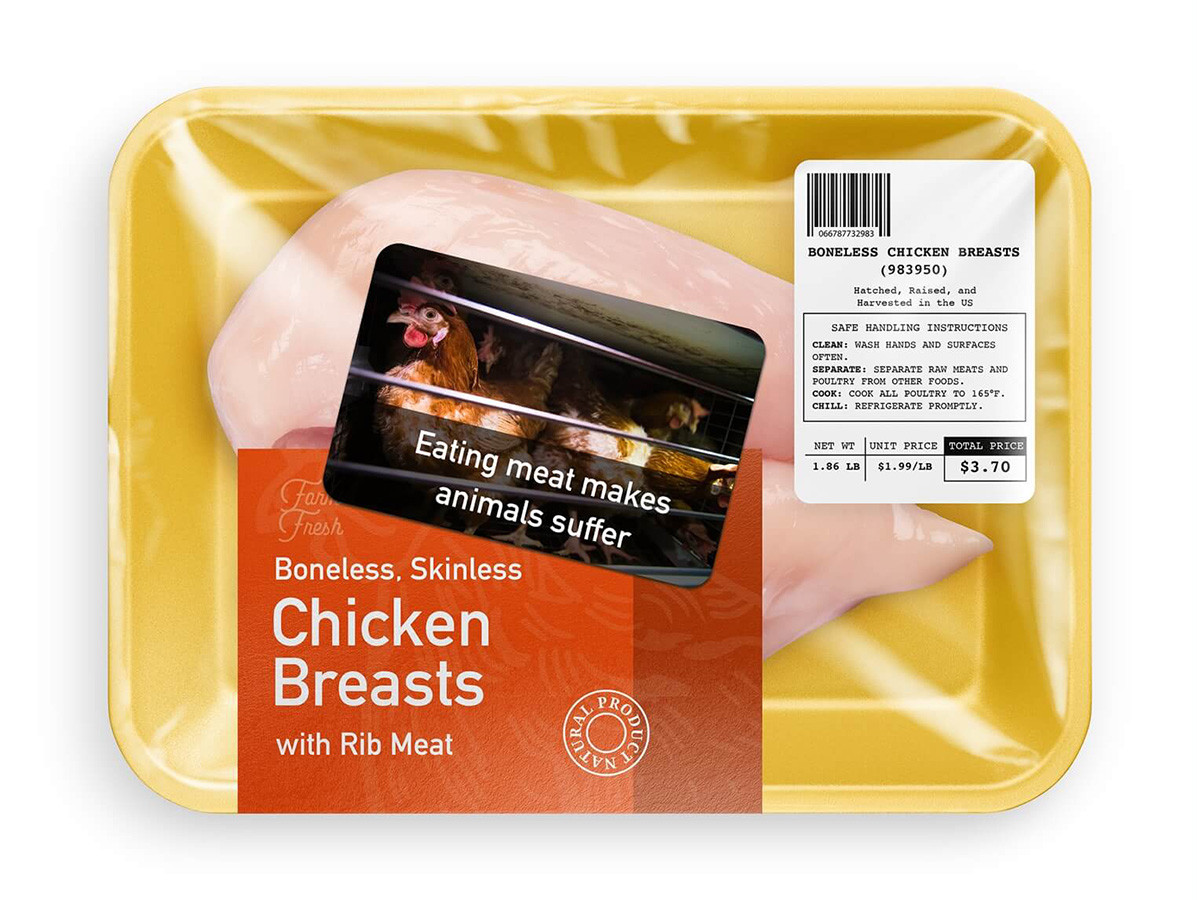We're currently searching through more than 4,000 articles, just a moment's patience...
We're currently searching through more than 4,000 articles, just a moment's patience...

'Meat shaming' stickers on meat packaging can have an inhibiting effect on meat purchases. Stickers that point to animal suffering, in particular, stir up feelings of shame, this is according to a Research by Anne-Madeleine Kranzbühler and Rick Schifferstein of TU Delft.
Activists in Australia have already put warning stickers on meat packaging in supermarkets. The researchers wondered what impact this might have on sales.
The activists in Australia used 'meat shaming' as a technique, seeking to publicly "shame" consumers who buy meat by pointing out its negative effects. Thus, the researchers applied the same method. "We deliberately chose negative emotions. They have a greater effect on behavioural change than positive emotions."
With a group of more than 500 participants, the researchers experimented with the text and images on the warning labels. For example, labels were created with messages that highlighted environmental damage, animal suffering, or health. They also tested the tone of the message, which was either purely informative or addressed the consumer directly. As for the entity behind the message, sometimes it was the government, an activist group, or even an individual.
The results of their study show that people are less likely to buy meat with these kinds of stickers on them, due to shame. Another interesting finding was that participants were not impressed by messages that pointed out the health risks of consuming meat. They also didn’t really seem to care who the warning was coming from.
Source: TU Delft
Vakblad Voedingsindustrie is a project of b2b Communications BV.
© COPYRIGHT 2025 VOEDINGSINDUSTRIE | ALLE RECHTEN VOORBEHOUDEN
Powered by Wallbrink Crossmedia © 2025
Een abonnement kost € 80,- exclusief 9% BTW per jaar.

We work in accordance with the privacy legislation. After your registration you will receive an e-mail with a confirmation link. Only after you have clicked on this link will you be registered as a recipient of the newsletter. If you can't find the e-mail in your inbox, please also look at unsolicited e-mail.


Lorem ipsum dolor sit amet, consectetuer adipiscing elit. Aenean commodo ligula eget dolor. Aenean massa. Cum sociis natoque penatibus et magnis dis parturient montes, nascetur ridiculus mus. Donec quam felis, ultricies nec





